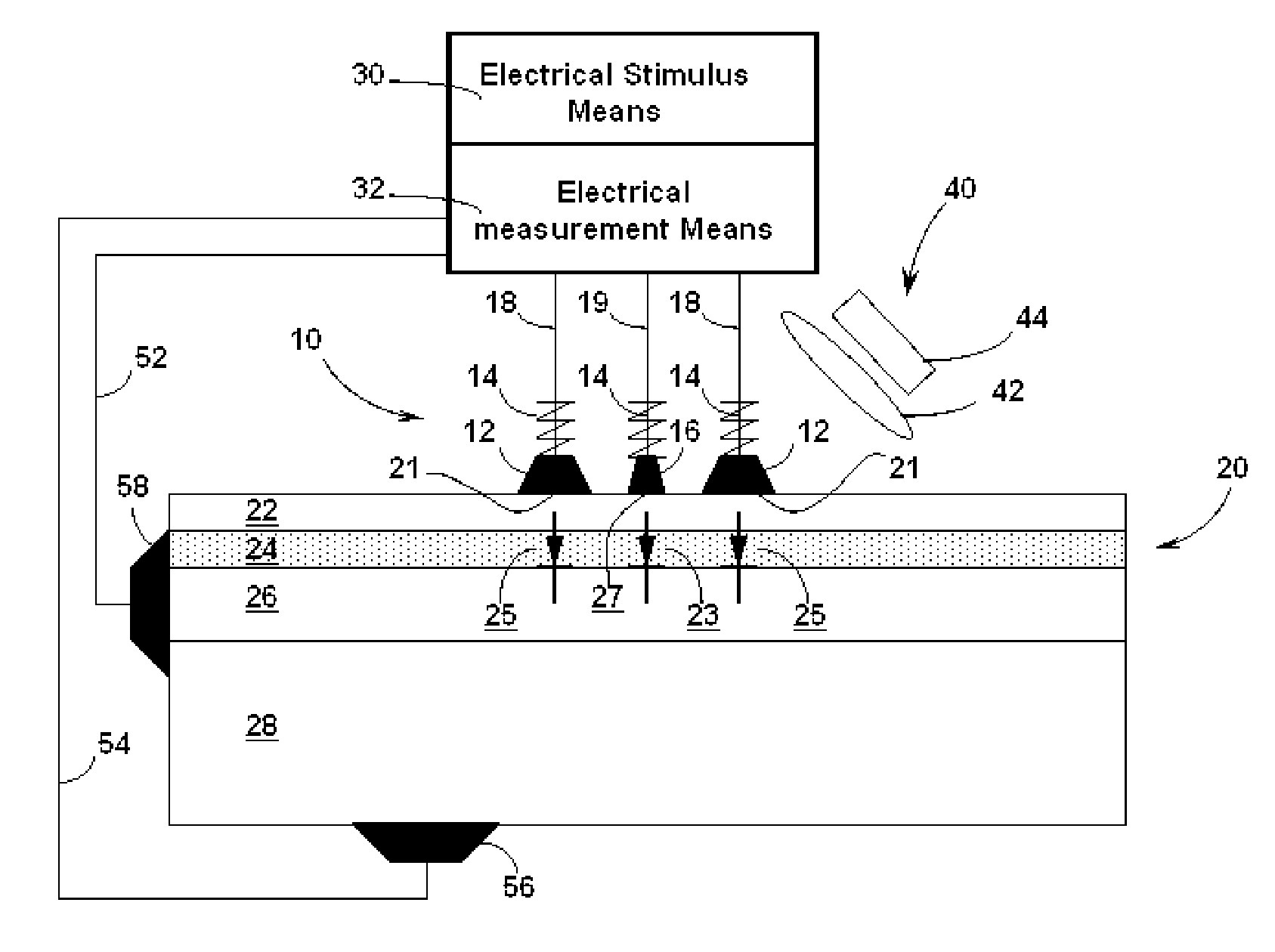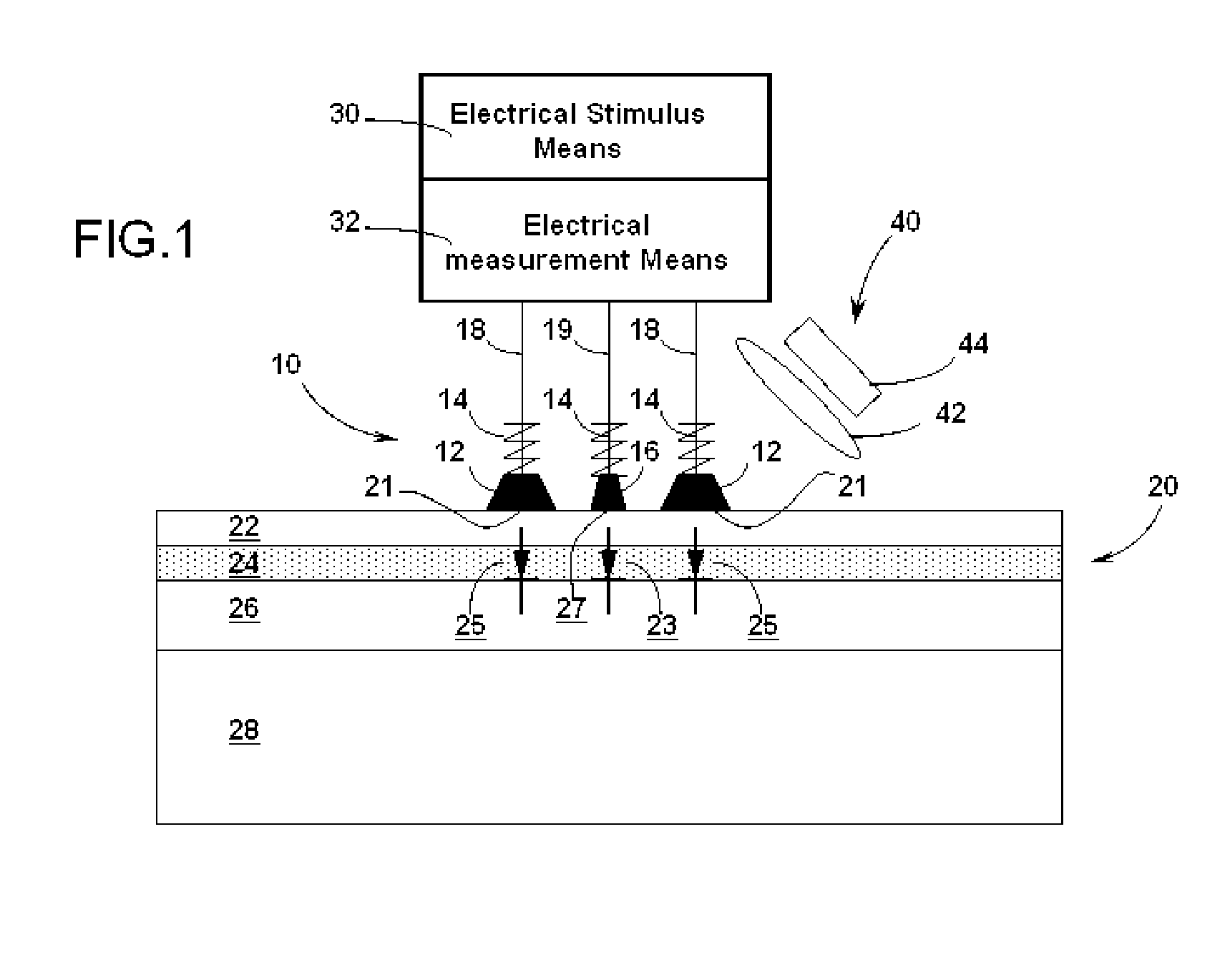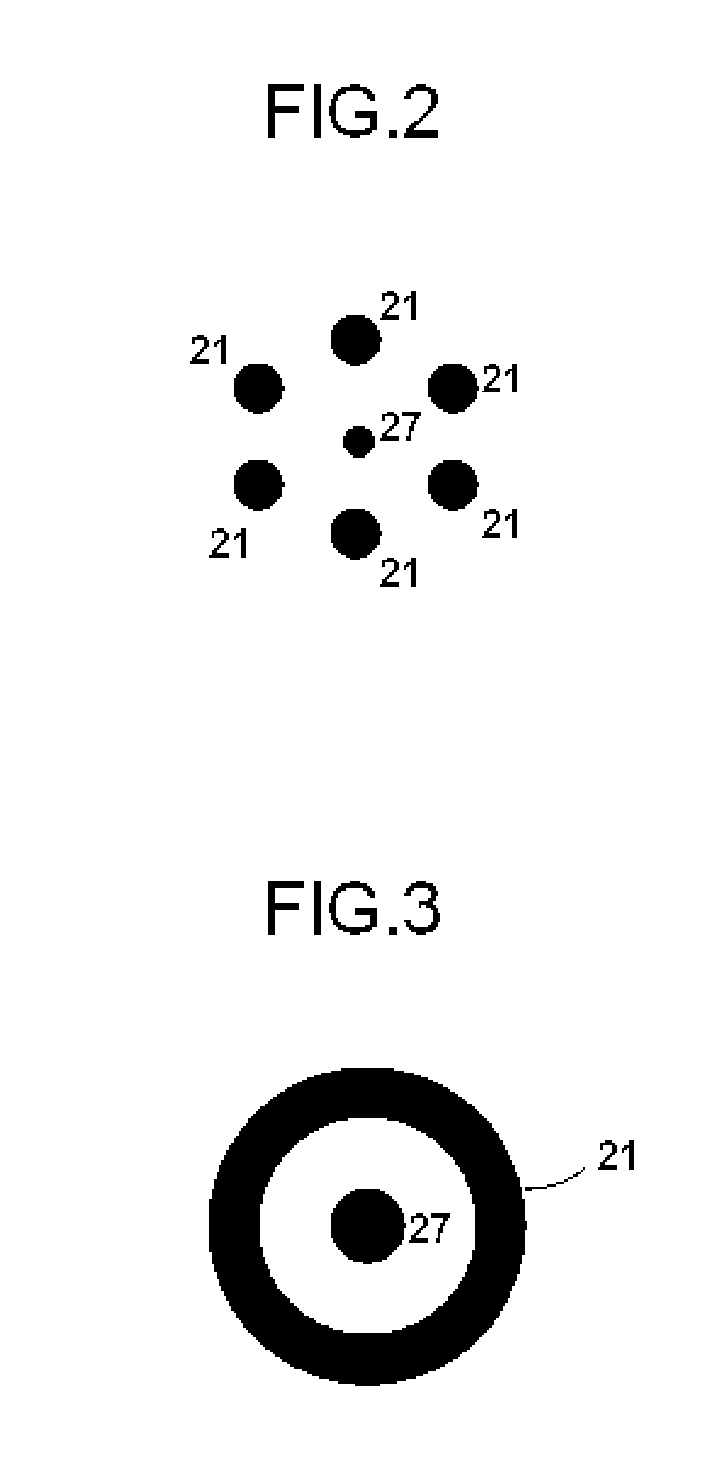Method and apparatus for nondestructively evaluating light-emitting materials
a light-emitting material and non-destructive technology, applied in the direction of individual semiconductor device testing, material analysis, instruments, etc., can solve the problems of unfulfilled need for non-destructive characterization, high photoluminescence efficiency, and still too expensive light-emitting technologies for wide-spread applications
- Summary
- Abstract
- Description
- Claims
- Application Information
AI Technical Summary
Benefits of technology
Problems solved by technology
Method used
Image
Examples
Embodiment Construction
[0021]The present invention will be described with the reference to the accompanying figures wherein like reference numbers correspond to like elements.
[0022]With reference to FIG. 1, a light-emitting material testing method is described in accordance with one embodiment of the nondestructive LED / OLED probe. The nondestructive LED / OLED probe 10 operates upon an associated light-emitting sample 20. The associated sample 20 typically has a plurality of layers 22, 24, 26 which are usually grown on a substrate 28. In FIG. 1, a gallium nitride (GaN) based LED structure is exemplarily shown, which includes a sapphire or silicon carbide (SiC) substrate 28, a p-type GaN region 22 and a n-type GaN region 26. The sandwiched layer between the p-type GaN region 22 and the n-type GaN 26 are AlInGaN (Al: aluminum, In: indium) multi-quantum-well barriers 24 which comprise the active / emissive region of LED device. Electrically the p-type GaN region 22 and the n-type GaN region 26 can be briefed as ...
PUM
 Login to View More
Login to View More Abstract
Description
Claims
Application Information
 Login to View More
Login to View More - R&D
- Intellectual Property
- Life Sciences
- Materials
- Tech Scout
- Unparalleled Data Quality
- Higher Quality Content
- 60% Fewer Hallucinations
Browse by: Latest US Patents, China's latest patents, Technical Efficacy Thesaurus, Application Domain, Technology Topic, Popular Technical Reports.
© 2025 PatSnap. All rights reserved.Legal|Privacy policy|Modern Slavery Act Transparency Statement|Sitemap|About US| Contact US: help@patsnap.com



